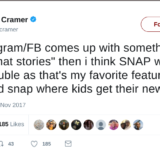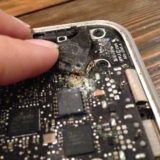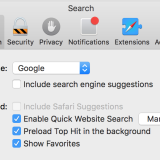Microsoft Invented the Pebble smartwatch
What if I told you there’s a smartwatch on the market for $150 with a dozen digital watch faces, personalized news, traffic, weather, email, text messaging, and calendar? What if I told you that this watch was put on the market a decade ago, and built by Microsoft?
As much as this sounds like the crowdfunded Pebble smart watch, which raised $10 million on Kickstarter last years, smashing records, this is indeed a Microsoft product, known as the SPOT watch (short for Smart Personal Objects Technology).
As regular readers know, I rarely concede victories to Microsoft, the brainchilds of the surface, Vista, and Bing, but I have to concede that they were several years ahead of the smartwatch trend.
The Pebble Has Barely Evolved From the SPOT
The SPOT was indeed a connected watch. Via FM signals, the watch picked up news, sports, and weather, and graphically, just as the Pebble does.
Designwise, the SPOT is surprisingly similar to the Pebble, the Kickstarter smartwatch that raised over $10 million. Control is through three buttons on the side, and the touch black and white display, just as on the Pebble.
- Vibrating alarms, Timer, Chronograph
- Sapphire touch display
- Calendar, Email, etc.
- Movies, custom news, stocks
- Sports, Traffic, Weather, Trivia
- Atomic timekeeping
- A dozen plus custom watchfaces for a customizable look (just like on the pebble)
So why is the Pebble so much more successful
It’s actually interesting to consider that Microsoft was just ahead of its time, as Apple was with the television mac. Here are the 5 reasons SPOT never caught on.
- No smartphones. Sure, there were Blackberries when the SPOT came out, but phones were still for calling and texting, rather than connecting.
- One-sided communication. Because Bluetooth had not yet been invented, the SPOT relied on radio waves. This meant that it could receive news, and calendar events, and emails, but it couldn’t send anything back.
- No fitness apps. Because technology hadn’t advanced to the point where email from the watch was feasible, I don’t blame them for that, but failing to capitalize on data junky fitness nuts was a fatal mistake. Even something as minor as a pedometer to compliment timing data may have given this watch a wider audience, saving it from obsolescence.
- No open SDK for new apps. Once again, this isn’t Microsoft’s fault, because the technology didn’t exist to make this feasible, but the biggest differentiator between the Pebble and the SPOT is its open SDK. The open SDK has allowed developers to create hundreds of compatible, beneficial apps, like Runkeeper, facebook, Snake, and Tetris. Opening up the platform made the watch infinitely more useful.
Microsoft Should Hire Back Whoever Came up with the SPOT
In the end, the SPOT was a moneyloser, and last year they shut down the SPOT radio network, four years after discontinuing the line, but it showed major potential, leaving me to wonder what happened to the team behind SPOT.
In all likelihood, its brainchild has long since been fired, or left the company over the failure of SPOT, but I hold out hope, that somewhere in the bowels of Microsoft, he/she remains, working on a new watch to convince us why Microsoft should be a market leader.
A guy can dream. Read about my own experience with my smartwatch, and with Google Glass, or leave a comment as to what you think.












